
Guests
- Nick Paton Walshinvestigative reporter and international security editor for CNN International.
A major investigation by CNN raises questions about whether U.S. soldiers opened fire on Afghan civilians last August after a massive suicide bomb exploded outside the Kabul International Airport. Compiling hospital records of gunshot wounds, video evidence and eyewitness accounts, CNN’s report appears to directly contradict the Pentagon’s narrative, which said over 180 people were killed in the single blast that ISIS-K claimed responsibility for. We speak to one of the co-authors of the CNN report, Nick Paton Walsh, who says reporters found 19 people “who quite specifically said they saw people shot in front of them or were shot themselves.”
Transcript
AMY GOODMAN: The Pentagon is facing questions about whether U.S. troops may have shot Afghan civilians following a devastating suicide bombing last year outside the Kabul airport. The questions center on what happened on August 26, 2021, less than two weeks after the Taliban seized control of Kabul. At the time, thousands of Afghans were traveling to the Kabul airport hoping to leave Afghanistan. On August 26th, a massive bomb blast exploded outside the airport gates. At least 180 people, including 13 U.S. troops, died that day.
The Pentagon says all of the deaths were linked to the blast, but Afghan eyewitnesses tell a different story. There were initial reports of multiple bombers as well as a gunfight outside the airport. The Pentagon spent months investigating what happened. It issued a report last week saying the attack was carried out by a single suicide bomber who detonated a bomb filled with ball bearings. The report also acknowledged U.S. marines had fired shots, but the Pentagon claims the shots didn’t hit anyone. This is Army Brigadier General Lance Curtis speaking Friday.
BRIG. GEN. LANCE CURTIS: There were a series of crossing fires to the front of the servicemembers on the ground that created the illusion that there was a complex attack, but there absolutely was not. There were no gunshot wounds. We have universal agreement between the Armed Forces Medical Examiner’s Office and also the medical providers on the ground. There were absolutely no gunshot wounds. During the course of our investigation, we found no evidence that, post-blast, U.S. servicemembers killed other U.S. servicemembers or Afghans.
AMY GOODMAN: During the news briefing, Army Brigadier General Lance Curtis acknowledged Pentagon investigators did not speak to a single Afghan civilian about what they witnessed August 26, 2021.
BRIG. GEN. LANCE CURTIS: So, talking to actual Afghans, very difficult given the current structure of Afghanistan and also the fact that U.S. forces had — had already left. … During the course of our investigation, we did not have an opportunity to speak with Afghans on the ground.
AMY GOODMAN: That was Army Brigadier General Lance Curtis Friday.
Two new investigations by news outlets are raising questions about the Pentagon’s findings. One was published by ProPublica with the organization Alive in Afghanistan. The second was done by CNN, which interviewed 19 survivors who say they saw people shot or were shot themselves. In a moment, we’ll be joined by Nick Paton Walsh, CNN’s senior international correspondent, but first let’s turn to some of the interviews he conducted with Afghans who survived the August 26 attack.
NICK PATON WALSH: Noorullah Zakhel said he was also in the trench, hit in the head by the blast, and tried to flee with his cousin, Suhail.
NOORULLAH ZAKHEL: I told to my cousin, “Suhail, run!” We run together. We went — I tried to go climb out from the canal. I succeeded, but I think my cousin escaped. The soldier came directly, and they started firing.
NICK PATON WALSH: When did you find out that Suhail was dead?
NOORULLAH ZAKHEL: In the morning time. When I called my family, “Is Suhail OK?” they said he is martyred.
NICK PATON WALSH: And how was his body? What were the injuries on his body?
NOORULLAH ZAKHEL: There were just shooted, in two bullets, one on head in this side and taken out from this side, and another one on the shoulder.
NICK PATON WALSH: A total of 19 survivors CNN has interviewed said they saw people shot or were shot themselves. The U.S. military said the witnesses we spoke to had, quote, “jumbled memories from a concussive event … and are doing their best to piece together what their brain is unlikely to remember clearly.” The volume of testimony from Afghan survivors, though, does present questions as to how so many witnesses could make such similar claims.
Another survivor, Morsal Hamidi, had a bullet injury to the left side of her face, say her records from the Italian hospital in Kabul.
MORSAL HAMIDI: I realized that the blood is coming from my face like water of a tap. I was hit by a bullet in my face, in my right jaw here, and the blood extracted from this part of my throat.
NICK PATON WALSH: We spoke to a doctor who treated patients at Wazir Akbar Khan Hospital, one of the biggest in Kabul. He said he pulled bullets out of four injured patients from the airport that night. He said he found gunshot wounds on many other dead bodies he examined, suggesting the number of people shot may be much higher. He asked we hide his identity for his safety.
DOCTOR: There was two kinds of injuries: people burned from the blast with lots of holes in their bodies, but with a gunshot, you can see just one or two holes, in the mouth, in the head, in the eye, in the chest. I removed bullets from four or five injured.
AMY GOODMAN: That’s an excerpt from a major CNN exposé.
We’re joined now by CNN senior international correspondent Nick Paton Walsh, who spent four months investigating what happened outside the Kabul International Airport last August 26th. Nick’s joining us from London, recently back from Afghanistan.
Nick, thanks so much for joining us. This is an explosive exposé, to say the least. Can you lay out more about what you found? You even make the point that one of the survivors, who was shot in the chest, was treated at Walter Reed outside of Washington, D.C., yet the Pentagon continues to deny anyone was injured by bullets.
NICK PATON WALSH: That’s correct. We obtained the hospital records from an evacuee, an Afghan survivor who ended up in Walter Reed Hospital — and can’t say much, to protect their identity here, but, yes, there is an explicit entry in their hospital records of a gunshot wound to the left chest.
And this feeds into a pattern of paperwork we obtained, or hospital statements, one from the large Emergency hospital, Italian-run, in Kabul, which received nine patients, they said, dead on arrival after the blast, seven with what they said were gunshot wounds, judging by the appearance of the wounds, to the head and to the chest. We heard records — we retained records, too, for two other individuals who said they were shot.
And then, of course, there were survivors. You just heard from Morsal Hamidi there, a fairly clear witness, who said that she was OK after the explosion and has a medical record saying she then received a bullet wound in her face, one of a number of eyewitnesses who describe a scene of carnage, certainly, after the blast, but then are aware of a secondary period in which more people are injured. So, you mentioned the 19 there. We spoke to dozens of witnesses to the actual events. It was those 19 who quite specifically said they saw people shot in front of them or were shot themselves.
NERMEEN SHAIKH: And, Nick, could you explain why it is that CNN decided to conduct its own investigation of the attack?
NICK PATON WALSH: Some of this emerged from conversations that my colleague Sandi Sidhu and our other colleagues had been having with Afghan civilians in the aftermath of other incidents who were saying, “Look, something doesn’t add up with what occurred at Abbey Gate.” And initially after the blast, there were reports in the local media and other media organizations that — people reporting that people had been shot. And there subsequently was denials of that. There’s been a changing narrative we’ve heard over the past months from the Pentagon itself.
But there was certainly doubt in my mind as to how a single suicide bomber could be responsible for possibly as many as 200 deaths, certainly in excess of 180 deaths. And so that initially sparked our interest. We began asking forensic blast experts whether they could agree with the idea that one suicide bomber could potentially be responsible for that many deaths. And subsequently, that grew to talking to the families of those lost in this awful incident, and then doctors and then survivors themselves. So, I would say probably the north of a hundred interviews carried out for this investigation.
NERMEEN SHAIKH: And what these forensic blast experts told you, two of them said that so many people couldn’t have been killed by a suicide attack carried out by only one person. But you spoke to many more forensic blast experts, and it seemed as though there wasn’t consensus on whether that was the case.
NICK PATON WALSH: That’s true. The experts we spoke to, they were divided as to whether a device of that size — and I have to tell you, too, the size of the device is purely one divined by the U.S. military from looking at the video and the hallmarks of the blast and comparing it to test explosions done. They assessed, from comparing those test explosions, that the device was probably 20 pounds in size. In fact, their EOD team only got to the site 13 hours after the blast happened, and accepted in a briefing I had at the Pentagon in January that their ability to gather data or gather evidence had been limited by that. So we don’t know as much, clearly, as — the Pentagon don’t know as much as they’d like to know about the device.
But one forensic analyst we took to the scene, Chris Cobb-Smith, who is a war crimes investigator, who used to be a U.N. weapons inspector, who’s got 38 years of experience looking at these things, he saw the damage that the bomb had done. You can still see the charring of an awning behind where the device went off. You can see pockmarks in the concrete around where the device went. His assessment was that the level of damage done to the concrete infrastructure there would suggest that the device could not have been big enough to kill 180 people.
Now, that consensus — as I said, there wasn’t a consensus. Other experts we spoke to, who didn’t go to the scene, looked at pictures and assessed, well, maybe it could have, in certain conditions, killed that many. Another expert we spoke to looked more at historical comparable incidents and said that this, for a single person-borne IED, explosive device, would have made it most effective by a factor of about four, compared to any other historical comparable. So, there is certainly a divided opinion here, but the expert we took to the scene was quite clear, from what they saw there, that it would be “impossible,” to quote, for that bomb to have killed all the people.
AMY GOODMAN: So, the Pentagon held their news conference last Friday, February 4th, hours after ProPublica and Alive in Afghanistan released their report that had similar findings. Then you released your report. And during a press briefing yesterday, your colleague, Oren Liebermann, asked Pentagon spokesperson John Kirby whether the Pentagon should further investigate what happened after the Kabul airport suicide bombing in light of your report. This is Pentagon spokesperson Kirby’s response.
JOHN KIRBY: The investigation, we believe, was comprehensive, it was credible, and it was quite definitive. And, Oren, I think you were here in the room when the investigating team came up here and laid it out for you over the course of an hour or more. Pretty detailed work. And as they said — and I’m, quite frankly, quoting from their work — the investigation found no definitive proof that anyone was ever hit or killed by gunfire, either U.S. or Afghan. And I think I’d leave it at that.
AMY GOODMAN: That’s Pentagon spokesperson Kirby responding to CNN. So, Nick Paton Walsh, you have, on the 26th, this suicide bombing, and the question is whether the U.S. soldiers opened fire, killing many, wounding others, or, as the Pentagon says, no, everything was as a result of the suicide bombing and that these doctors are confusing ball bearings with bullets. Three days later, you have the U.S. drone strike, that the Pentagon was forced — after an enormous number of international journalists said they targeted the wrong guy and they ended up killing 10 people, including seven children. That was three days later. Can you talk about that sequence and the fact that the Pentagon did not speak with — admitted themselves — a single Afghan?
NICK PATON WALSH: Yes, they admitted to us, during the two months of conversations we had with them about our findings, that they had not spoken to a single Afghan civilian and none of the doctors in the hospitals, none of the survivors. This is not an abnormal set of events. And I think it’s fair to say that so many of the civilian casualty investigations are often hampered by the fact that the U.S. military activity takes place in an area that’s often hostile, so they cannot go back to the scene, look at what occurred from an objective standpoint, interview people around and gather that testimony. That is often left to journalists. And so, the U.S. investigation, when they look at those allegations, often relies on video, open-source testimony, open-source video, and interviews with their own personnel. And that’s certainly what occurred here.
And, look, there is a stark difference between what we heard from speaking to Afghans who were there, Afghans who treated the patients, Afghans who pulled bullets out of four patients — one Afghan doctor, I should say — their conclusions about how this came about and then the conclusions of a three-and-a-half-month investigation done by the Pentagon in which they interviewed their own personnel, it seems some British personnel, too, though we’ve not been able to see exactly what those British personnel said, and some other civilians, too, who were involved, it seems, in the treatment of people injured there on the actual airport base itself. So, very different sets of evidence here and very different conclusions. And that is not something, I think it’s fair to say, when we’ve looked at previous civilian casualty incidents in the past, that is particularly abnormal, because of the nature of how U.S. investigations proceed, what they’re able to do, and then what journalists do on the ground in the places where those events have occurred.
NERMEEN SHAIKH: Nick, were you able to — in your conversations with civilians at the scene, Afghans, were you able to determine why it is, if it is the case, that U.S. troops opened fire in such a way that they hit so many civilians?
NICK PATON WALSH: I think it would be wrong for me at this stage to try and ascribe motives to what occurred here. In our investigation, we were very much just trying to establish the facts of what people had seen. But, of course, you can imagine a scene of some chaos in the aftermath of the explosion. And, indeed, if it was the case that troops at the scene did open fire, then I am sure there would have been multiple emotional reasons why that could have occurred. But, as I say, our investigation was focused on the facts of what happened, what people had seen, and we didn’t look at motivations.
AMY GOODMAN: We want to thank you very much for —
NERMEEN SHAIKH: And —
AMY GOODMAN: Oh, Nermeen, you have a last question?
NERMEEN SHAIKH: Just last. What survivors — you spoke to survivors. What are they calling for? What would they like to see happen?
NICK PATON WALSH: They’d just like the truth of what occurred, I think, to be recognized. Many of them are still scared. Many of them were reluctant initially to speak about this. Many of them are still living with the fear of the Taliban in the society that is now Afghanistan. And so I think they simply wanted the recognition of the truth of how the people, often close to them, who they saw die, died, and also for recognition to what they say they witnessed themselves.
AMY GOODMAN: Nick Paton Walsh, we want to thank you for being with us and for this investigation, CNN senior international correspondent, award-winning investigative reporter. We’ll link to your report at democracynow.org, as well as the reports of ProPublica and Alive in Afghanistan.
This is Democracy Now! When we come back, we speak with Congressmember Ro Khanna, whose district is in the heart of Silicon Valley. He’s just written a new book, Dignity in the Digital Age: Making Tech Work for All of Us. Stay with us.

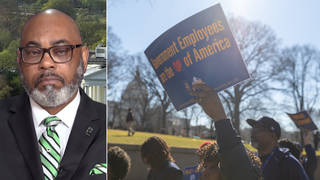
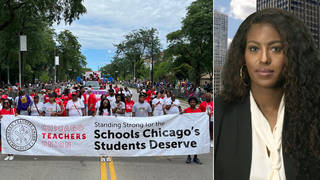
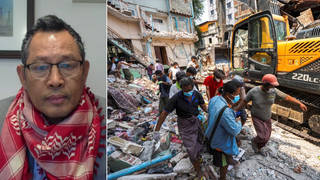
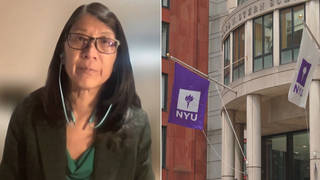





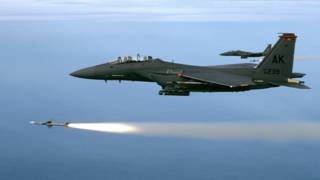

Media Options